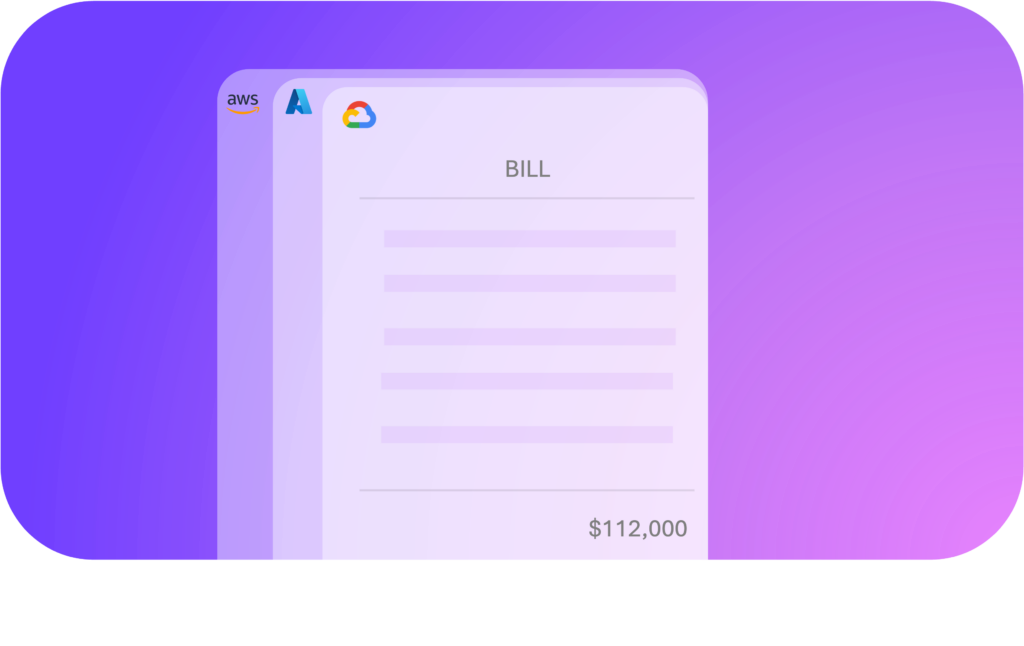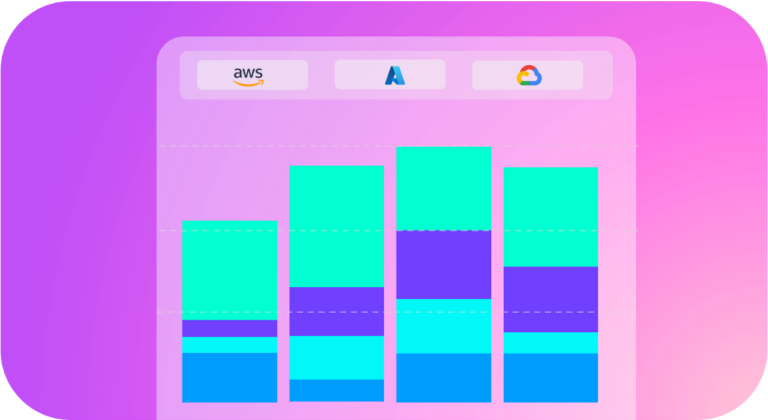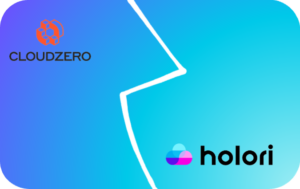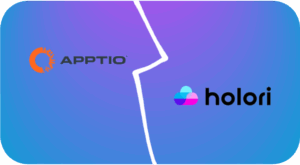You’re a coding rockstar – Python, Rust, Terraform, your IDE is your second home. But when it comes to your cloud bill, you feel like you’re staring at a black screen with a cryptic error message: “Insufficient Visibility.”
The cloud offers unparalleled agility and innovation, but without seeing the bigger picture, those surprise charges at month’s end can leave you feeling like you just hit a major memory leak.
Fear not! This article explores the importance of cloud cost visibility and how it forms the foundation for effective cloud cost management. We’ll show you how to gain a clear picture of your cloud spending, identify hidden inefficiencies like rogue processes, and optimize your resources for peak performance.
No more financial mysteries, just clear visibility and optimized cloud deployments. Let’s debug your cloud bill together and turn it into a success story!
What is cloud cost Visibility
Cloud cost visibility isn’t just seeing your cloud bill; it’s like having X-ray vision for your cloud spending. It empowers you to analyze costs across applications, resources, and infrastructure, giving you a clear picture of how you use the cloud and what it truly costs. This transparency unlocks the key to informed decision-making and ultimately, optimized cloud expenses.
True cloud cost visibility goes beyond the cost itself and strives to measure the Return on Investment (ROI) of your cloud resources

Why Cloud Cost Visibility Matters
Imagine running a successful restaurant, but your cash register malfunctions and stops displaying sales data. You wouldn’t be able to track your revenue, identify profitable dishes (resources), or understand customer behavior (usage patterns). Cloud cost visibility is your functional cash register for the cloud. It provides real-time insights into your spending, allowing you to identify cost leaks (wasteful ingredients), optimize resource allocation (popular dishes), and maximize your cloud ROI (profitability).
Here’s why cloud cost visibility is crucial:
- Cost Control & Optimization: Visibility empowers you to identify idle resources, underutilized services, and potential cost leaks. This knowledge allows you to implement targeted optimization strategies and reduce unnecessary expenditure.
- Improved Budgeting & Forecasting: With clear cost insights, you can create accurate budgets, forecast future spending trends, and plan for growth effectively. According to Hashicorp, 40% of companies were over their cloud budget in 2021.
- Informed Decision-Making: Visibility allows you to compare costs across different cloud services and providers, helping you make data-driven decisions about resource allocation and pricing models.
- Enhanced Accountability & Responsibility: Clear cost visibility fosters accountability within teams using cloud resources. They can understand the cost implications of their actions and make more responsible choices.
Challenges to Achieving Cloud Cost Visibility
Despite its importance, achieving comprehensive cloud cost visibility can be challenging due to several factors:
- Multi-Cloud Environments: 90% of businesses leverage services from multiple cloud providers (AWS, Azure, GCP etc.). This creates a fragmented view of costs, requiring consolidation and unified reporting.
- Granular Billing Data: Cloud providers generate a mountain of detailed billing data, often broken down to hourly intervals for some resources and monthly for others. A typical cloud bill contains thousands of rows of data. Analyzing this vast amount of data requires specialized tools and expertise to extract actionable insights. By understanding cost trends, identifying idle resources, and optimizing allocation across these different billing windows, you can unlock the true power of cloud cost visibility.
- Hidden Costs: Cloud costs extend beyond service charges. Unforeseen expenses like data transfer fees, idle resources, or inefficient configurations can contribute significantly to your overall bill.
- Beyond IaaS: Many businesses leverage additional cloud-based services like Datadog for monitoring, Snowflake for data warehousing, Databricks for data analytics,or OpenAI for AI. These services incur separate costs that contribute to your overall cloud bill. Gaining comprehensive cloud cost visibility requires capturing and analyzing spending data from these diverse sources alongside your IaaS expenses. The AI adoption will drive this bill significantly
- Lack of Standardized Reporting: Each cloud provider has its own billing structure and reporting format. This makes it difficult to compare costs and gain a holistic view of your cloud spending. Cloud providers often use different metrics for measuring resource usage (e.g., CPU hours vs. vCPU hours). This inconsistency makes it difficult to compare costs accurately across different services or providers.
- Inconsistent Tagging Practices: Cloud providers offer tagging functionalities to categorize resources for cost allocation. However, these tagging practices can vary significantly between providers. This inconsistency makes it difficult to compare costs and analyze usage patterns across different cloud environments.
- DevOps are not business person: DevOps professionals wear many hats, specializing in rapid application development and deployment. While their expertise is invaluable, cloud cost management might not be their primary focus. Understanding complex billing structures and optimizing resources financially might not be as intrinsically motivating for them compared to other aspects of their role. This disconnect between DevOps priorities and cloud cost visibility can create a hurdle in achieving optimal cloud spending.
- Skills Gap: Effectively analyzing complex cloud billing data and implementing cost optimization strategies requires specialized skills and knowledge. A lack of in-house expertise in FinOps practices can be a significant barrier. Businesses may need to invest in training or consider hiring dedicated FinOps professionals to bridge this gap.
Holori: the ultimate cloud visibility platform
FinOps sits at a critical intersection between technology and finance. While finance professionals excel at cost management, they might lack deep cloud expertise. Conversely, tech teams understand cloud infrastructure but might struggle with cost accountability and ROI analysis. This disconnect creates challenges in presenting cloud cost insights. Finance might prefer traditional dashboards, while technical teams might benefit from a more visual approach like infrastructure diagrams.
Holori addresses this very challenge with a platform that caters to both perspectives:
- Infrastructure diagrams with change monitoring: This provides tech teams with a clear visual representation of their cloud infrastructure, allowing them to track changes and identify resource configurations and dependencies. Holori reverse engineer your existing infra and generate an infra diagram of your cloud setup.
- Unified dashboard for multi-cloud expenses: Finance teams gain a consolidated view of cloud spending across different providers, enabling them to monitor cost trends, identify outliers, and make informed financial decisions.
Other cloud visibility features that Holori provides:
- Granular Cost Analysis: Holori provides detailed cost breakdowns by service, resource, department, or any other relevant dimension, allowing you to pinpoint cost drivers and identify optimization opportunities.
- Work seamlessly with multiple stakeholders: Invite your colleagues easily on the platform so that they can see their departments/project costs. Holori aggregates all your accounts from multiple providers and let you customize access and reporting granularity.
- Multicloud tagging strategy: Holori’s virtual tag approach allows standardized cost allocation by department or project across providers, and empowers deeper cost insights through drill-down by tags. This not only enhances cost visibility but improves cloud resource management through better governance, chargeback reporting, and even streamlined cloud migration.
- Customized Reporting & Alerts: Create custom reports and set up alerts to track specific cost metrics and proactively address potential issues. Receive email or slack alerts.
- Cost Allocation & Chargeback: Holori simplifies cost allocation by assigning cloud expenses to specific departments or projects, fostering accountability and cost awareness.
- Cost Optimization Recommendations: Holori analyzes your cloud usage patterns and provides tailored recommendations for optimizing spending based on best practices.
By leveraging Holori, you gain a clear and actionable understanding of your cloud costs, empowering you to make informed decisions and optimize your cloud investments for maximum value.
Conclusion
Cloud cost visibility is the cornerstone of effective cloud cost management. By gaining a comprehensive understanding of your cloud spending, you can unlock significant cost savings, improve resource allocation, and ensure your cloud journey is fueled by optimal efficiency. Holori, with its multi-cloud support, granular cost analysis, and actionable insights, can be your trusted guide on the path to cloud cost clarity and optimization.
Try it out now: https://app.holori.com/





